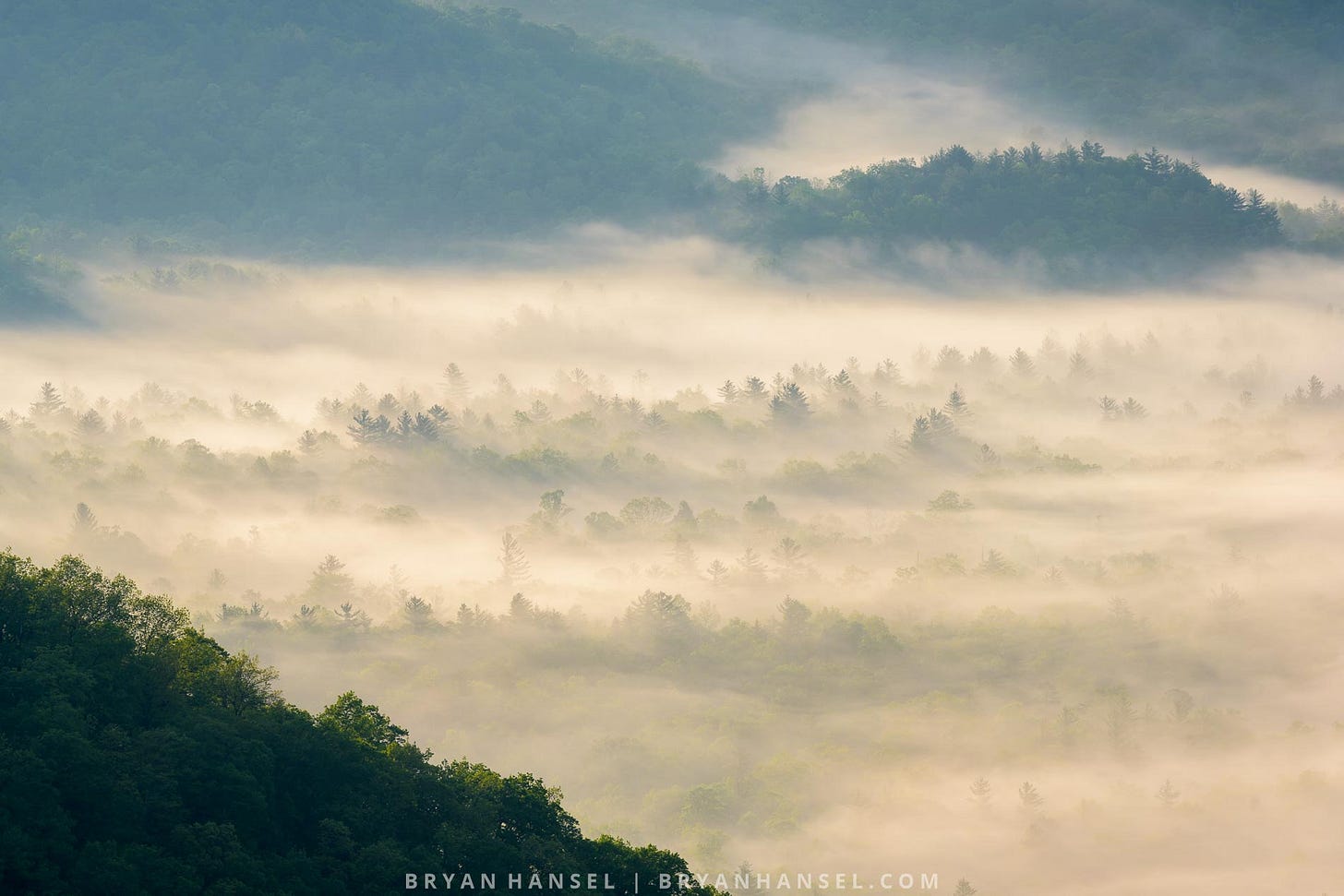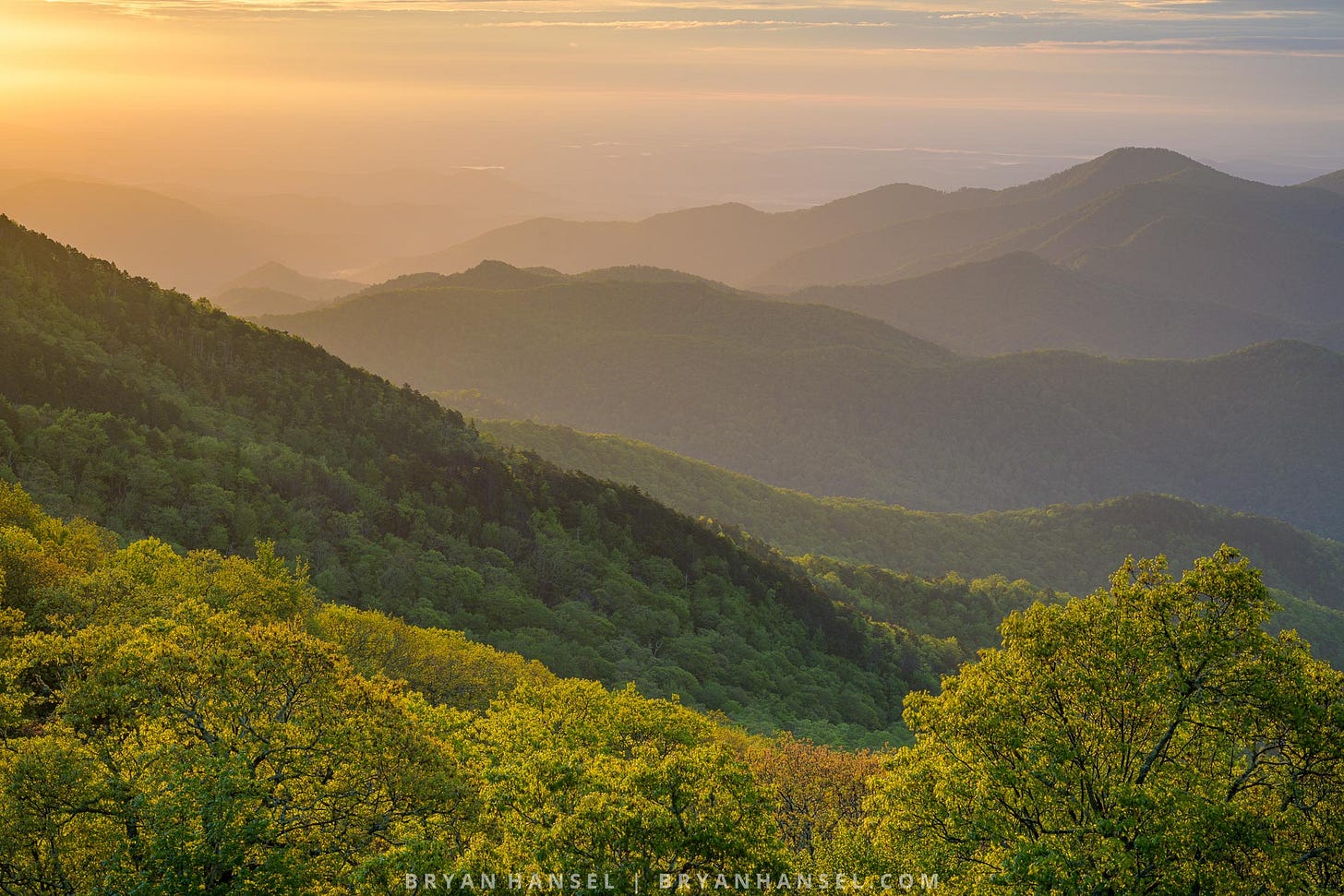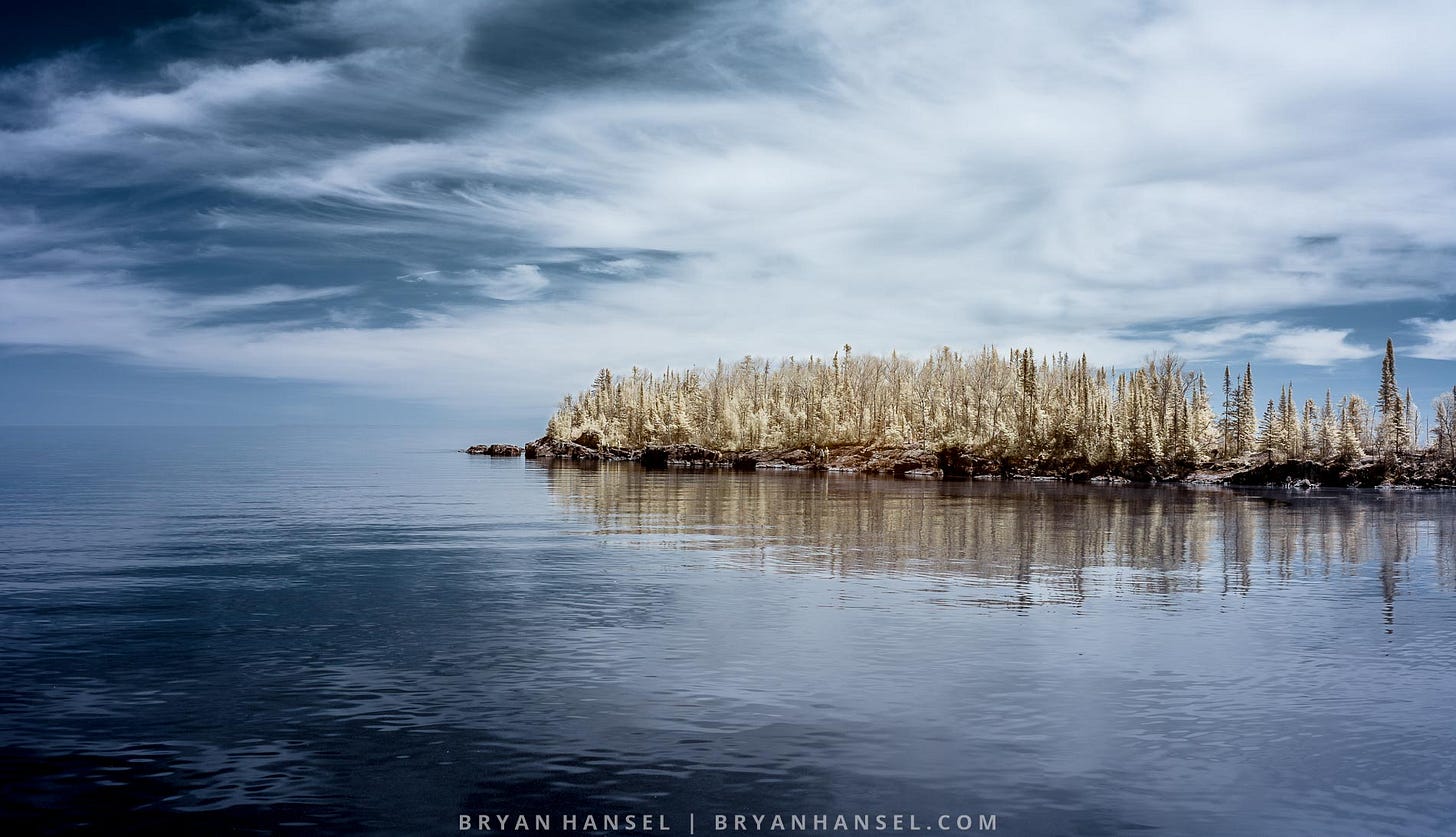With travel for workshops, the end of the school year, testing a new camera and finishing up some work, the last half of May was busy. I shot little.
Outside of the shooting I did in the Blue Ridge Mountains, I shot about 50 total images that I kept. Some of those are similar compositions that I didn’t want to delete in case I change my mind. Out of those 50, I have eight that are one star or above, and two that are above three stars. This doesn’t include infrared shots, which I haven’t had a chance to look at.
You could save that I had a rough month for photography.
The highlight was the trip to the Blue Ridge Mountains. I was teaching a photography workshop. On photo workshops, I seldom shoot the way I would if I was by myself. Even though I didn’t shoot as much, I did come away with good shots. I’ll show a few of them here, and I’ll briefly discuss what lenses you should bring if you plan a visit to the Blue Ridge Parkway. The Great Smoky Mountains National Park shoots similarly, so you could do the same there. The waterfalls are more intimate in the Smokies, so I’d do the suggested three lens combo instead of the two lenses you can get away with on the Blue Ridge.
The best part of the Blue Ridge Parkway are the views. There are 100s of pullouts and viewpoints that give you views that look like this. In May, there’s often fog in the valleys, and if you are lucky enough to get color in the sky, it’s one of those places that you could drop the camera, have it go off, and get a good photo.
The hard part of the Blue Ridge Parkway is that the easy-to-access overlooks don’t often have foregrounds. The way you shoot them is to bring a longer lens and zoom in on the ridges. That also helps to make the ridges look compressed. If you want foregrounds, you’ll often need to do a good hike before sunrise or back to your car after sunset. There are exceptions to this, but they usually aren’t at official viewpoints.
For that reason, I highly recommend that you bring a 100-400mm or 150-600mm lens with you. That lets you get past the grass foregrounds and work with the ridges. I was at 115mm in the above photo and 360mm in the next one.
One of the downsides of the weather window that we had in May was that we had a lot of cloudy days with no views. We’d literally drive up the mountains into the fog and turn right around. You can see an example of the fog breaking a bit during a “sunset.”
When you drive down the mountains, there are a lot of waterfalls to visit. This is especially true around Brevard, North Carolina. Brevard is a quirky little college town with friendly people and great food. I can recommend Love Eat Thai Kitchen, Garibaldi Plaza Mexican, and Rocky’s Grill & Soda Shop. Rocky’s has fantastic malts and ice cream. Mayberry’s Soups & Sandwiches is also good. If you have time, visit the Starfangled Press for cool artwork.
Below is one of the many waterfalls near Brevard. Many are just short hikes.
For the waterfalls, you could bring a 14-30mm or a 16-35mm, but I’d suggest that most of them could be shot with a 24-120mm. If you get to the waterfalls before breakfast, you’ll likely have them to yourself. But the parkway and Brevard area are highly visited, so lots of people will want to look at and photograph the waterfalls. If you are shooting the waterfalls with a wide angle, you might be getting in everyone’s view.
So, if you are trying to keep your gear at a minimum, I’d recommend a two lens kit: 24-120mm and a 100-400mm.
There are plenty of subjects for wide angle lenses, such as the below photo of the bridge. It’s one of my favorite shots from the trip. I love old bridges. It was shot at 17mm. I’ll always bring along a wide zoom, because you never know.
For filters, I think you could get by with two or four. I’d recommend a Singh-Ray Bryan Hansel Waterfall Polarizer and a LB Neutral Polarizer. For most of the day while shooting waterfalls, you’ll use the Waterfall Polarizer to remove reflections, make the colors pop and give water that peaceful, calm look. At the edges of the day, it starts to get too dark, so I’ll switch to the LB Neutral (If you buy direct from Singh-Ray, use the code “thathansel” for a discount).
The next two shots are a waterfall without and with the Waterfall Polarizer. The first is without and the second is with.
For the sunrises and sunsets, you’ll want a filter such as a 3-stop reverse or an All-in-One. It’s also nice to have a 3-stop soft for shooting away from the sunrise or sunset in the early morning light. But usually the contrast range isn’t too intense that direction so you can forego it, especially when shooting telephoto and picking out compressed ridges.
For those into the sunrise shots, you’ll want a filter because the foreground ridges can go so dark. In the example below, I used a 4-stop medium that I’ve been testing. It kept the foreground trees bright enough in the direct sunlight to show up in the photo.
In this next shot, I used a 3-stop soft. I wasn’t shooting directly into the sun, but I still wanted to darken down the sky a bit. I angled the filter slightly to have the dark part of the filter cover the upper left of the photo and the clear part cover the lower right.
If you’re writing down the gear, you’d have this:
16-35mm (conditionally in the Blue Ridge and a must have for the Smokies)
24-120mm
100-400mm
Polarizers: Waterfall Polarizer, LB Neutral
ND Grads: 3-stop reverse or All-in-One, 3-stop soft
A solid tripod is a must as well. Since none of the hikes are super long, I used my full-sized tripod and ballhead. For the longer hikes, I hauled along my travel tripod.
I think that the Blue Ridge Parkway and surrounding Pisgah National Forest are both beautiful. You could spend months in each and never run out of possibilities, but most of the time we have limited time and maybe one visit to the area. In that case, use the parkway for your sunrises and sunset and photograph waterfalls during the mid-day. If you’re a sucker for old cabins, like I am, make sure to visit the Cradle of Forestry Center. You’ll get to see sweet old cabins like the one below.
Until next time
That’s a wrap for this issue. I’ll getting ready to head out to the Badlands and Black Hills next week for a workshop and then back in town for the whirlwind that is summer. Looking at my calendar, it feels like summer is almost over before it has even begun.
The final shot is an infrared shot of Artist’s Point in Grand Marais. See you again in two weeks.














Since I use a crop sensor (1.5) Fuji system my lens choice would be 10-24 and 70-300 then perhaps 18-55 if I plan to do a video.